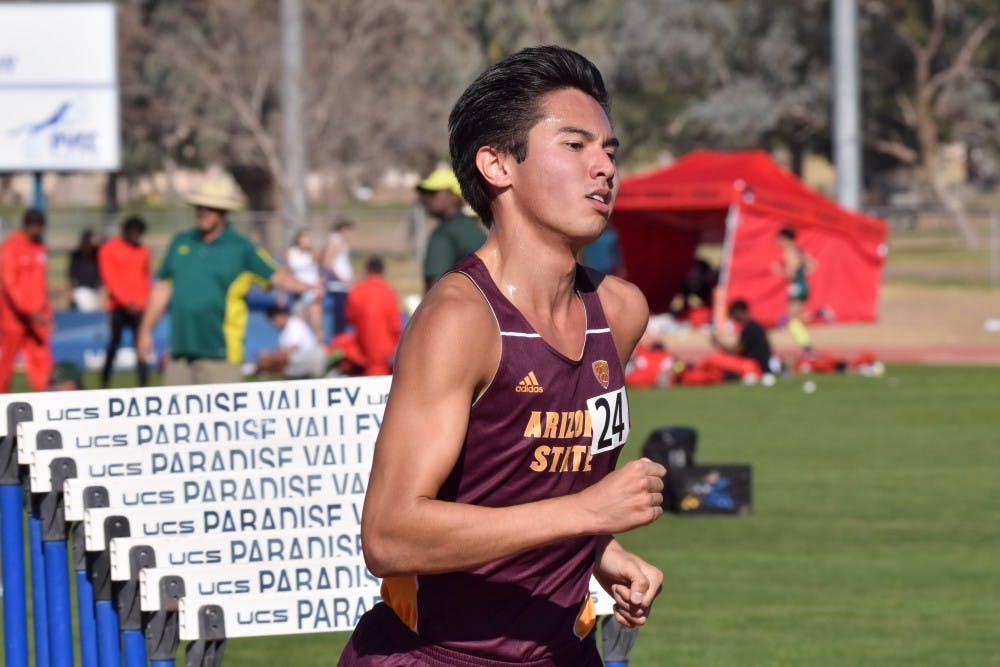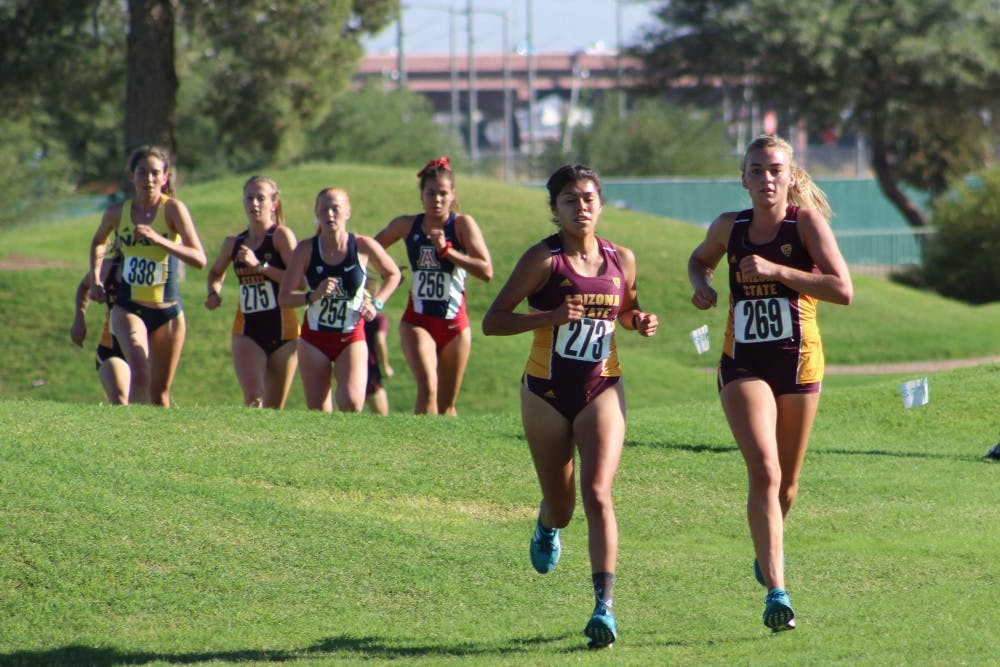From dirt to track, the ASU cross country team has shifted into track and field season.
The Sun Devil distance squad finished their cross country season on Oct. 27, 2017, subsequently got a couple weeks of an offseason, and then it was on to track season where many of the cross country runners will continue to compete.
So far, the Sun Devils have competed in three indoor meets — the NAU Friday Night Duals, the Texas A&M Team Invitational and the Puma Indoor Invitational.
During track season, the cross country team members branch out into multiple events such as the mile, the 6,000-meter race and the distance medley to name a few. Each runner races in the event specific to them, rather than the whole distance team running the same race together.
“Everyone kind of has different mileage on the team because our bodies are different,” senior distance runner Billie Jo Dytrt said.
Each person has a different workout based on their endurance and the events they run.
“You’re actually on the track doing shorter repetitions, but then there’s a lot more emphasis on speed development,” redshirt junior distance runner John Reniewicki said.
“Indoor and outdoor track are kind of a challenge different from cross country in that you have less time to prepare whereas cross country you have a longer summer base period,” Reniewicki said.
Indoor track season is where the team develops and when outdoor season comes, the team is ready for the high caliber season.
Cross country season and track season both present their own challenges. During a cross country race, a runner might have to think of the difficulties of the course, whereas in track season they might not think of the track as much.
However, there is a higher chance of being boxed in or cut off at the turns of the track.
“You can run a little more smoothly and a little more regularly on a track, depending upon the race,” redshirt junior mid-distance runner J.P. Nelson said. “The track can become a little more crowded than a cross country course because everybody is sort of packed in the same space, and you kind of got to jostle through.”
Running on a track can be beneficial for a runner because it can be easier to implement strategy. Because the track is completely even on every straight and turn, runners can have a good idea of where they are in relation to everyone else.
During track season, the athletes will sometimes have to compete in more than one race a day, contrary to cross country season.
“Especially at the beginning of our season, they’ll (coaches) throw us in a 3000 (meter) and they might even throw us in an 800 just to get that speed, and they’ll do that often,” Dytrt said. “Usually in the championship season, they’ll need you to run two races … they want us to get used that feeling of coming back from your first race and getting ready for a second one.”
Reach the reporter at cncarte1@asu.edu or follow @CCydeni on Twitter.
Like State Press Sports on Facebook and follow @statepressport on Twitter.





